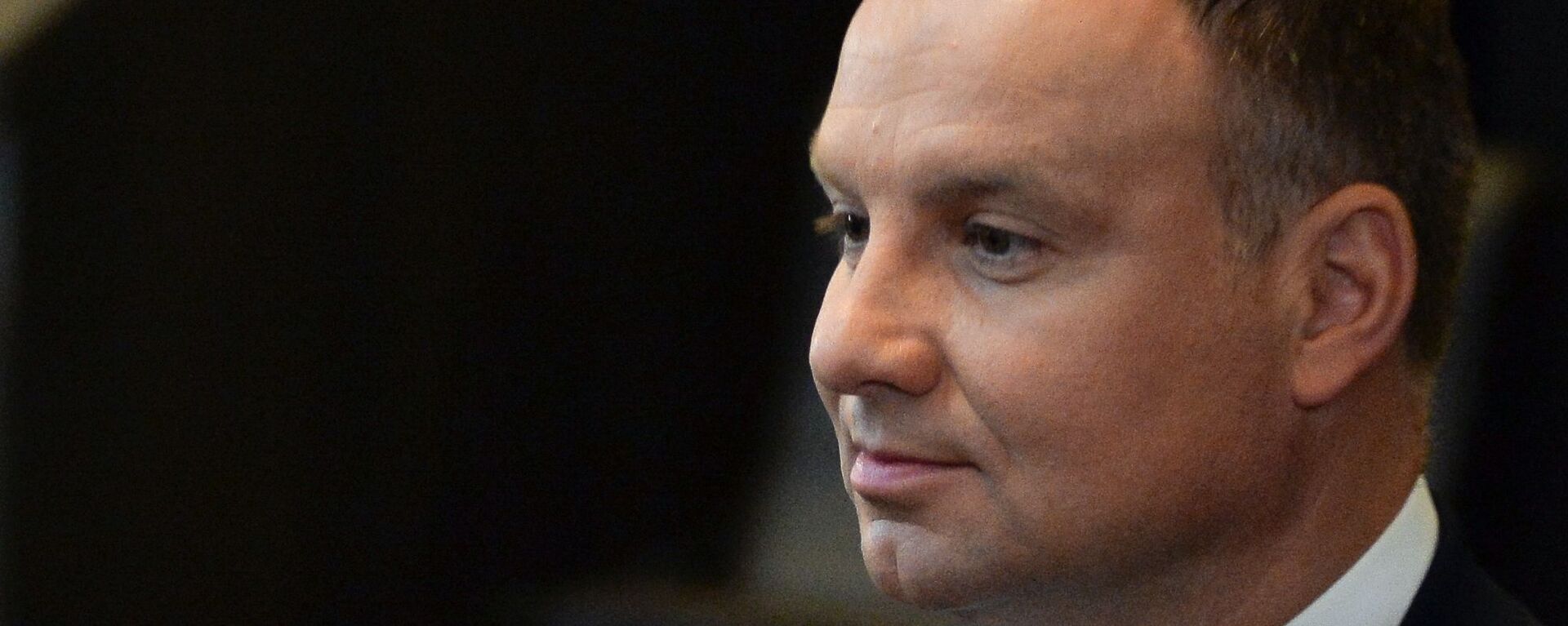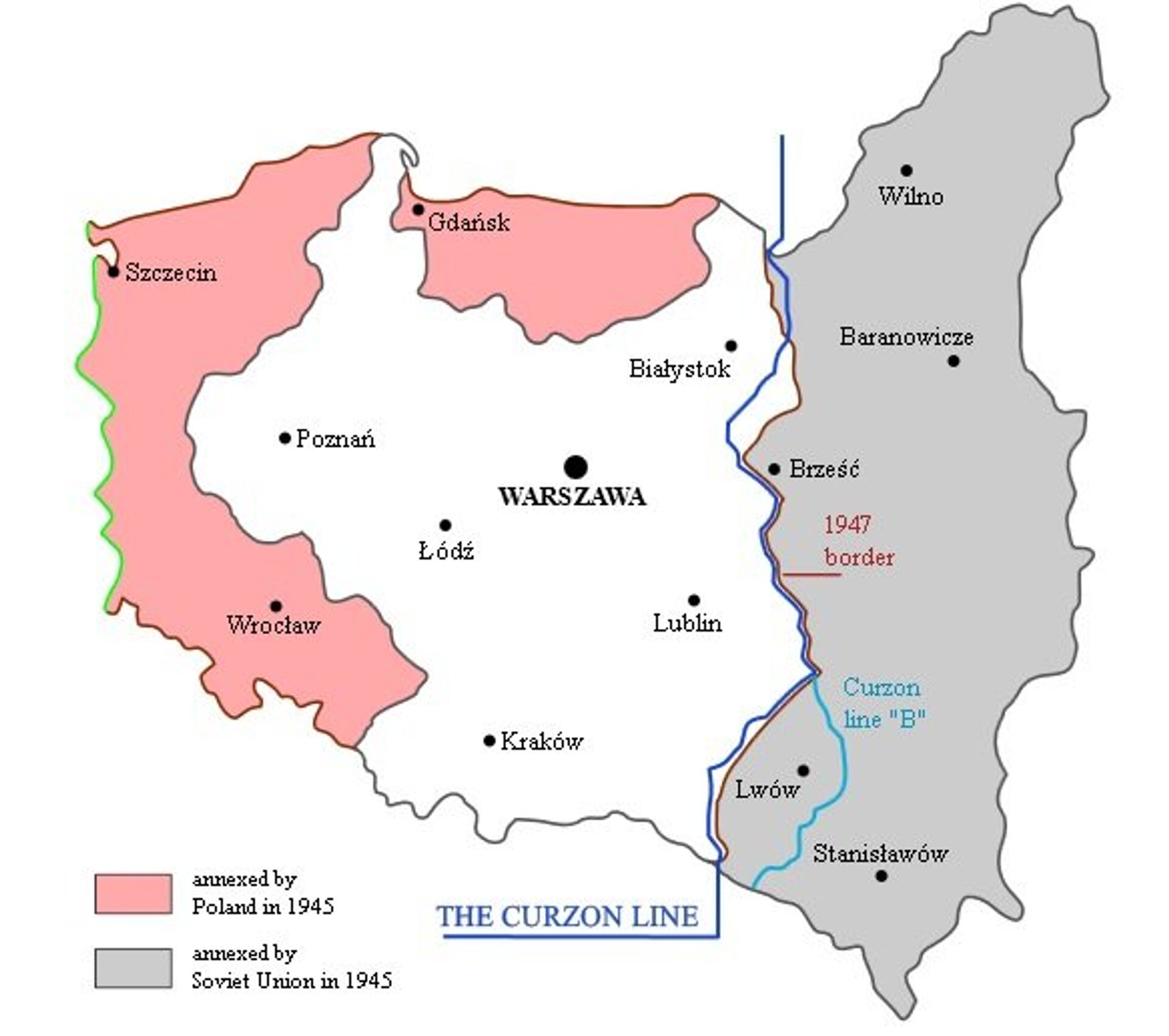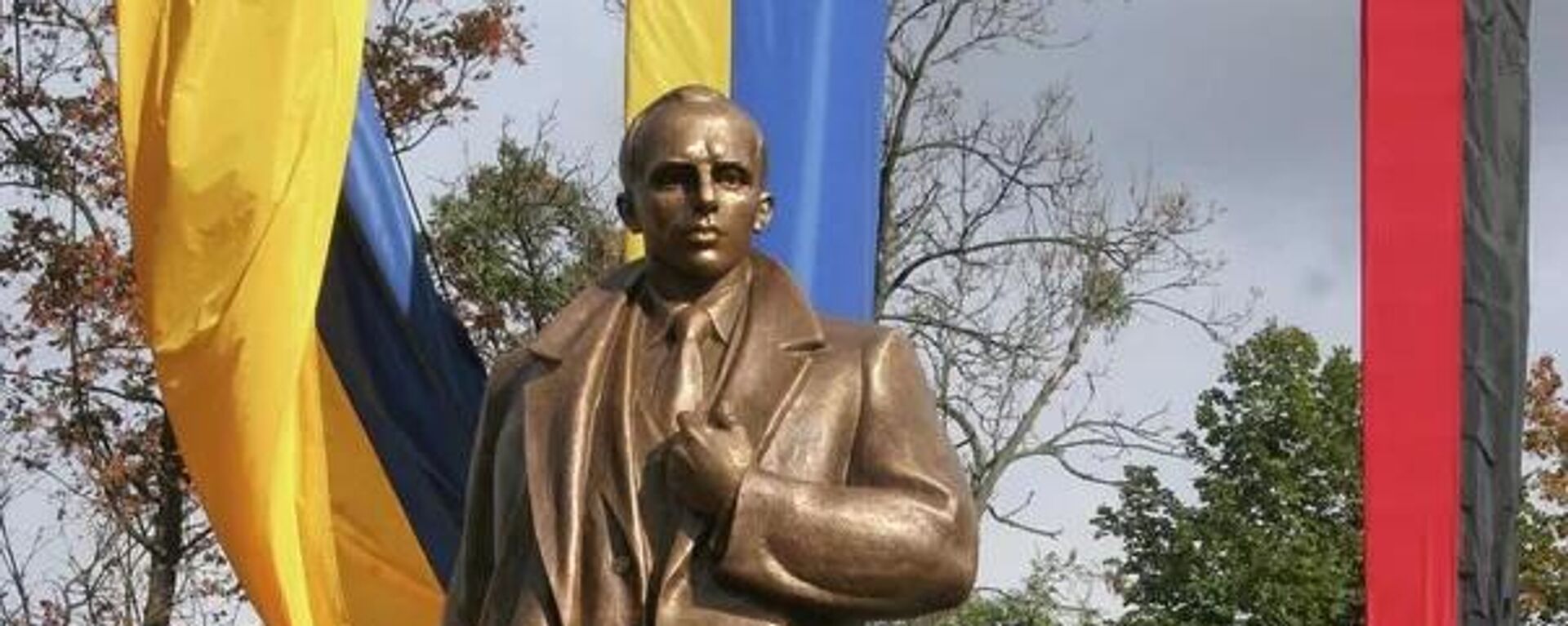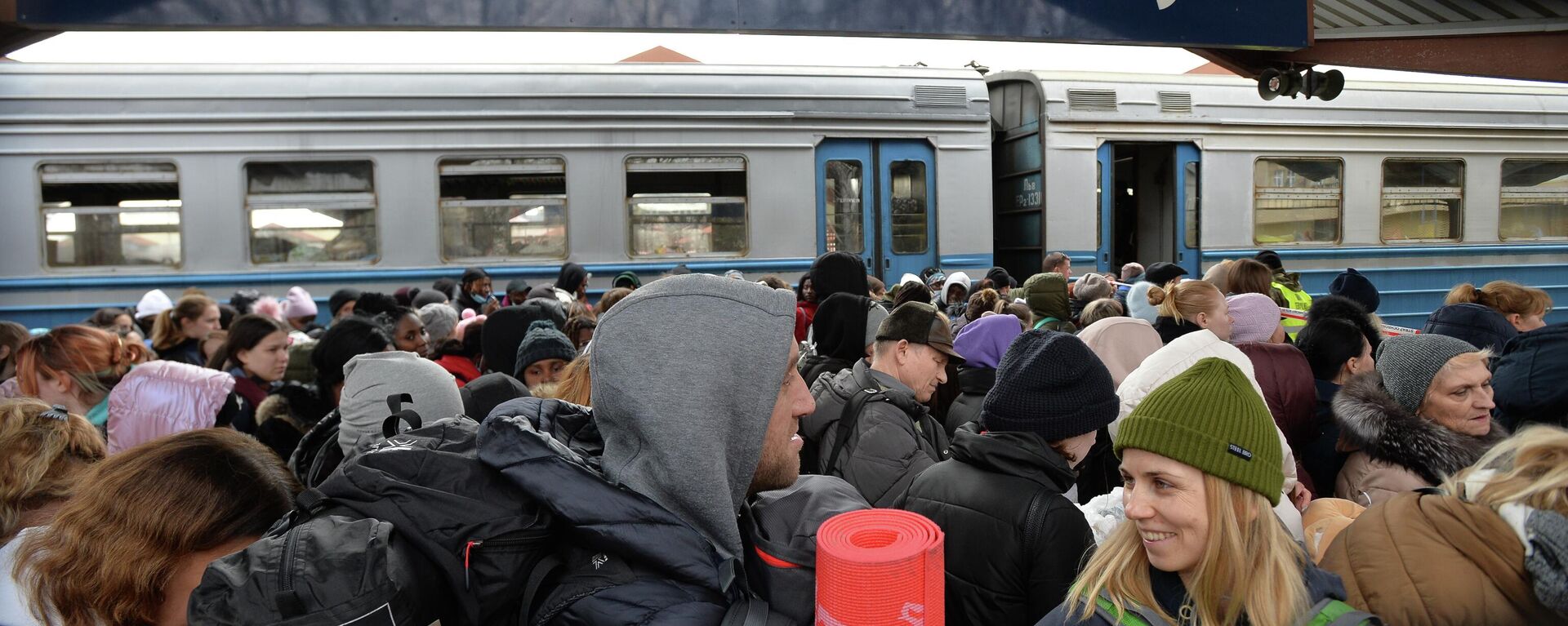https://sputnikglobe.com/20230811/what-is-polands-role-in-ukraine-and-could-warsaw-go-through-with-plans-to-invade-1112537045.html
What is Poland's Role in Ukraine and Could Warsaw Go Through With Plans to Invade?
What is Poland's Role in Ukraine and Could Warsaw Go Through With Plans to Invade?
Sputnik International
Russian officials have expressed growing concern about suspected plans by Poland to seize western Ukraine, either to turn it into a NATO protectorate or outright annex it. What are the chances of this happening? What’s the current state of Polish-Ukrainian relations? And how has Poland been affected by the Ukrainian crisis? Sputnik explains.
2023-08-11T16:18+0000
2023-08-11T16:18+0000
2023-08-11T16:23+0000
sputnik explains
poland
ukraine
nato
european union (eu)
ukrainian insurgent army (upa)
volodymyr zelensky
vladimir putin
sergei shoigu
warsaw
https://cdn1.img.sputnikglobe.com/img/106146/27/1061462773_0:0:3326:1872_1920x0_80_0_0_9d1422139fa400c81ef38e732fd253bd.jpg
Russian Defense Minister Sergei Shoigu accused Warsaw of harboring ambitions to establish a permanent military presence in western Ukraine on Wednesday, saying Polish troops could be dispatched to the country, "ostensibly to ensure…security,” but “in fact – for the subsequent occupation of this territory."Shoigu’s comments come in the wake of warnings by President Putin last month calling on Warsaw not to follow through with any “revanchist plans” to seize Ukrainian lands, with Putin recalling that Poland surrendered its claims to western Ukraine at the end of the Second World War after receiving German lands as “a gift from Stalin to the Poles.”Putin and Shoigu’s concerns were recently echoed by Russian Foreign Intelligence chief Sergei Naryshkin, who similarly said that Russia has picked up on chatter within the Polish leadership about efforts to “introduce control” in western Ukraine.Polish officials have dismissed Russian concerns about Warsaw’s intentions, or refused to comment. However, former NATO Secretary General Anders Rasmussen may have let the cat out of the bag in June when he said that “some countries,” including Poland, might “individually take action” and assemble a new “coalition of the willing” to deploy troops in Ukraine.What are Poland’s Historical Claims in Ukraine?Poland’s claims to large swathes of Ukraine go back to the era of the Polish-Lithuanian Commonwealth - the long-defunct Eastern European super-state which once controlled vast territories in present-day Poland, Ukraine, Belarus, parts of northwestern Russia, Lithuania, Latvia and a piece of Estonia between the 16thto the 18th centuries. The commonwealth disappeared from the map of Europe in the late 1700s after being partitioned by the Russian Empire, Prussia and Austria, with Poland only reemerging as an independent state in 1918, as Russia was engulfed in internal strife following the February and October Revolutions of 1917.Almost immediately after its statehood was reestablished, Poland’s nationalist authorities sought to take advantage of the chaos and civil war in Russia to mount an invasion of territories in what is today western Ukraine and Belarus, which Warsaw claimed as part of Poland. The bitter Polish-Soviet conflict lasted until March 1921, with Poland capturing over 201,000 square kilometers of western Ukrainian and Belarusian territory, inhabited by over 12 million people, mostly ethnic Ukrainians and Belarusians, but also Poles, Russians and Jews.In 1939, with its efforts to prevent a new war in Europe rebuffed by Britain and France, Moscow signed a non-aggression pact with Germany, and on September 17, 1939, as the Polish government fled to Romania after the Nazi invasion, Soviet troops marched into Ukrainian and Belarusian territories captured by Warsaw during the Polish-Soviet War, plus the city of Lvov (now also part of Ukraine). After the Second World War, these borders became the internationally recognized frontier between Poland and the USSR. As compensation, Moscow agreed to the transfer of 101,000 square km of German lands, including major farming and industrial centers in Stettin, Liegnitz, Breslau and Oppeln, to Poland.Do Poland and Ukraine Get Along?Culturally, Poles and Ukrainians share similarities common to all Slavic peoples of Eastern Europe, although the Poles are West Slavs (along with the Czechs and Slovaks) while Ukrainians are East Slavs (together with Russians and Belarusians). Religiously, most Poles are Catholics, while the majority of Ukrainians are Eastern Orthodox. Linguistically, Ukrainian is grammatically far closer to Russian than Polish, although lexically, it’s closer to Polish.A difficult history has complicated ties between Poland and Ukraine.On one hand, as a key US ally in Eastern Europe, Warsaw has spent decades advocating for and advancing the pro-Western, pro-European Union and pro-NATO sentiments of part of Ukraine’s political and economic elites going back to the first color revolution in Kiev in 2004/2005, trying to pull Kiev out of the pro-Russian orbit and toward the EU. In 2014, Poland played a major behind-the-scenes role in negotiating an agreement between Ukraine’s opposition and President Viktor Yanukovych at resolving the Euromaidan crisis, before walking away from the agreement as the opposition seized power.On the other hand, there are a number of historical issues between the Ukrainian and Polish peoples that have soured Warsaw, Brussels and Washington’s geopolitical plans. For one thing, there is historical bad blood caused by the Polish nobility’s exploitation of Ukrainian peasants during the Polish-Lithuanian Commonwealth era, a factor which contributed to Ukrainian Cossack commander Bohdan Khmelnytsky’s 1648 uprising and appeal to the Russian czar for assistance, an event which culminated in the unification of Russia and Ukraine in a union that would last over 300 years.More recently, many Poles have expressed discomfort over Warsaw’s rabidly pro-Ukrainian policy, pointing to the modern-day Ukrainian government’s glorification of Stepan Bandera, Roman Shukhevych and other Ukrainian Nazi collaborators, whose Ukrainian Insurgent Army (Ukrainian acronym UPA) militias murdered up to 200,000 Poles, as well as anti-fascist Ukrainians, Russians and Jews in Volhynia and Eastern Galicia during WWII. Ukraine’s refusal to apologize for these crimes, the erection of monuments to UPA leaders, and their lionization in textbooks for Ukrainian schoolchildren, have irked Poles, especially those whose families were affected by the UPA’s genocidal actions.Economic Ties: Why Has Poland Banned Ukrainian Grain?On the economic front too, things are not as peachy as politicians in Warsaw and Kiev might like, with Poland imposing a ban on Ukrainian grain amid concerns from Polish farmers warning that the glut of Ukrainian foodstuffs has driven down prices to unsustainable levels. The grain ban sparked a major diplomatic spat earlier this month after an assistant to Poland’s president slammed Kiev for its lack of “gratitude” to Warsaw for its substantial support, prompting a senior aide to President Zelensky to attack the Polish official over his “opportunistic, “manipulative” and “treacherous” remarks, and to label him a Russian “tool.”Poland, like most other Western powers, has faced a rocky economic situation thanks to the Ukrainian crisis, balancing on the brink of recession in the second and fourth quarters of 2022 with -2.6 and -2.3 percent growth. Like other European countries, Warsaw has faced major difficulties stemming from the loss of cheap Russian energy supplies, resulting in higher energy costs, higher production costs, and galloping inflation (which hit a record 24 percent in February 2023).How Many Ukrainian Refugees are in Poland?Complicating things further is the refugee crisis, with millions of Ukrainians fleeing west to Poland over the past year-and-a-half. According to UN data, the country now hosts close to one million refugees, with some 1.6 million Ukrainians applying for asylum.Poland has complained to EU institutions about the spiraling costs of hosting Ukrainian refugees. At the same time, many Ukrainians have struggled to adapt to life in the country, and facing falling sympathy from Poles, with sentiments for supporting refugees dropping from 84 percent to 50 percent over the past year, in what Polish researchers have dubbed “compassion fatigue.”How Has Poland’s Security Been Impacted by Ukrainian Crisis?Poland is one of the top donors of military assistance to Ukraine, fourth overall only behind the US, Germany and Britain (not counting EU institutions). Poland’s contributions have included some €3 billion ($3.2 billion) in military aid, including dozens of fighter jets and helicopters left over from its Soviet-era armories, over 300 T-72s (including the local Polish PT-91 variant), hundreds of armored vehicles, self-propelled artillery and multiple rocket launchers, anti-aircraft guns, surface-to-air missile systems, trucks, drones, mortars, small arms and ammunition. Poland has also committed 14 of its German-made Leopard 2A4 main battle tanks, probably the newest and costliest equipment Warsaw has sent to date. NATO has also put pressure on Warsaw to transfer its F-16s to Ukraine, but Polish authorities have rejected the idea, saying it had “too few aircrafts” to give away without affecting national security.Like other NATO nations, Poland has depleted its armories sending arms to Ukraine, to the point where Warsaw has complained about its European alliance member neighbors’ lack of “generosity” by comparison.Polish officials and media have remained tight-lipped about the impact the delivery of billions of dollars in weapons to Ukraine have had on their own security. However, many of their European neighbors have openly admitted that their armed forces now have enough arms and ammunition to last as little as a few days in an emergency. In any case, Poland’s willing donation of large quantities of weapons to Ukraine shows that its authorities’ long-stated claims about Russia’s “aggressive” intentions to attack Poland have nothing to do with reality.Did Ukraine Accidentally Bomb Poland?The Ukrainian crisis did almost drag Poland into a World War III scenario with Russia in November 2022, when an errant Ukrainian air defense missile landed in a village in eastern Poland, killing two farmers. Zelensky immediately blamed Moscow and urged Poland and NATO to take action to put Russia “in its place.” Later, even after Polish, US and NATO officials confirmed that the missile was in fact Ukrainian, Zelensky refused to admit Kiev’s responsibility, prompting NATO diplomats to accuse him of “openly lying” about the incident.Is Poland Engaged in a Military Buildup?As the outpost of NATO on the alliance’s eastern flank, Poland has had plans to increase the size and capabilities of its armed forces going back to long before the escalation of the Ukrainian crisis, and welcomed plans to station more US forces on the country’s territory (including Aegis Ashore missile defense capabilities fitted with MK-41 launchers which could be easily converted to fire nuclear-tipped Tomahawk cruise missiles at Russia).Poland, one of the few countries to have met the 2014 NATO commitment to spend two percent or more of its GDP on defense, recently announced plans to increase defense spending to 4 percent of GDP, and to more than double the size of the military to 300,000 troops. Poland’s 2023 defense budget is expected to reach in excess of 130 billion zloty (€27.7 billion or $30.4 billion).Are Polish Soldiers Already Fighting in Ukraine?Officially, Poland has not admitted to sending troops to Ukraine to take part in the proxy war against Russia. However, hundreds or even thousands of mercenaries from Poland may have traveled to the country over the past year-and-a-half to join the fight.Sputnik has reported on Russian forces’ close encounters with Polish-speaking mercs, and late last year, Polish media estimated that as many as 1,200 Polish nationals fighting in Ukraine had already been killed, and that a special 1,700-space “American-style” cemetery had been created in a settlement in northeastern Poland.So Will Poland Invade Ukraine?Ultimately, whether or not the Polish government will ignore Russian warnings and move forward with plans to try to establish a NATO protectorate in western Ukraine, or outright annex a piece of the country, is unknown. Doing so would obviously threaten to turn the Ukrainian conflict into full-blown World War III scenario.“The secession of western Ukraine, the fragmentation of Ukraine and the transfer of land to Poland are unacceptable," Belarusian President Alexander Lukashenko said in talks with President Putin last month. “And if the population of western Ukraine needs this, we will, of course, support them,” he added.
https://sputnikglobe.com/20230717/polish-politician-slams-idiotic-ukrainian-partnership-talk-amid-praise-for-wwii-fascists-1111949160.html
https://sputnikglobe.com/20230806/how-many-ukrainian-refugees-are-in-poland-1112425052.html
https://sputnikglobe.com/20221122/i-do-not-want-war-with-russia-polish-prez-spills-the-beans-about-recent-missile-incident-1104554084.html
https://sputnikglobe.com/20230810/nato-prepares-to-risk-polish-troops-on-foolhardy-foray-into-ukraine-1112513647.html
poland
ukraine
warsaw
Sputnik International
feedback@sputniknews.com
+74956456601
MIA „Rossiya Segodnya“
2023
News
en_EN
Sputnik International
feedback@sputniknews.com
+74956456601
MIA „Rossiya Segodnya“
Sputnik International
feedback@sputniknews.com
+74956456601
MIA „Rossiya Segodnya“
poland, ukraine, russia, proxy war, proxy conflict, nato, protectorate, history, analysis, explainer, polish-lithuanian commonwealth, soviet union
poland, ukraine, russia, proxy war, proxy conflict, nato, protectorate, history, analysis, explainer, polish-lithuanian commonwealth, soviet union
Russian Defense Minister Sergei Shoigu
accused Warsaw of harboring ambitions to establish a permanent military presence in western Ukraine on Wednesday, saying Polish troops could be dispatched to the country,
"ostensibly to ensure…security,” but “in fact – for the subsequent occupation of this territory."Shoigu’s comments come in the wake of warnings by President Putin
last month calling on Warsaw not to follow through with any
“revanchist plans” to seize Ukrainian lands, with Putin recalling that Poland surrendered its claims to western Ukraine at the end of the Second World War after receiving German lands as “a gift from Stalin to the Poles.”
"Have our friends in Warsaw have forgotten about this?" Putin asked.
Putin and Shoigu’s concerns were recently echoed by Russian Foreign Intelligence chief Sergei Naryshkin, who similarly said that Russia has picked up on chatter within the Polish leadership about efforts to
“introduce control” in western Ukraine.
Polish officials have dismissed Russian concerns about Warsaw’s intentions, or refused to comment. However, former NATO Secretary General Anders Rasmussen may have
let the cat out of the bag in June when he said that “some countries,” including Poland, might “individually take action” and assemble a new
“coalition of the willing” to deploy troops in Ukraine.
What are Poland’s Historical Claims in Ukraine?
Poland’s claims to large swathes of Ukraine go back to the era of the Polish-Lithuanian Commonwealth - the long-defunct Eastern European super-state which once controlled vast territories in present-day Poland, Ukraine, Belarus, parts of northwestern Russia, Lithuania, Latvia and a piece of Estonia between the 16thto the 18th centuries. The commonwealth disappeared from the map of Europe in the late 1700s after being partitioned by the Russian Empire, Prussia and Austria, with Poland only reemerging as an independent state in 1918, as Russia was engulfed in internal strife following the February and October Revolutions of 1917.
Almost immediately after its statehood was reestablished, Poland’s nationalist authorities sought to take advantage of the chaos and civil war in Russia to mount an invasion of territories in what is today western Ukraine and Belarus, which Warsaw claimed as part of Poland. The
bitter Polish-Soviet conflict lasted until March 1921, with Poland capturing over 201,000 square kilometers of western Ukrainian and Belarusian territory, inhabited by over 12 million people, mostly ethnic Ukrainians and Belarusians, but also Poles, Russians and Jews.
In 1939, with its
efforts to prevent a new war in Europe rebuffed by Britain and France, Moscow signed a non-aggression pact with Germany, and on September 17, 1939, as the Polish government fled to Romania after the Nazi invasion, Soviet troops marched into Ukrainian and Belarusian territories captured by Warsaw during the Polish-Soviet War, plus the city of Lvov (now also part of Ukraine). After the Second World War, these borders became the internationally recognized frontier between
Poland and the USSR. As compensation, Moscow agreed to the transfer of 101,000 square km of German lands, including major farming and industrial centers in Stettin, Liegnitz, Breslau and Oppeln, to Poland.
After the Soviet Union’s collapse in 1991, the frontier established following WWII became accepted as the border between Poland and independent Ukraine, but many Poles, particularly those who fled western Ukraine after the war, continued to refer their lost ancestral homelands as the Kresy, or ‘Borderlands’, and hoping for their reabsorption into Poland.
Do Poland and Ukraine Get Along?
Culturally, Poles and Ukrainians share similarities common to all Slavic peoples of Eastern Europe, although the Poles are West Slavs (along with the Czechs and Slovaks) while Ukrainians are East Slavs (together with Russians and Belarusians). Religiously, most Poles are Catholics, while the majority of Ukrainians are Eastern Orthodox. Linguistically, Ukrainian is grammatically far closer to Russian than Polish, although lexically, it’s closer to Polish.
A difficult history has complicated ties between Poland and Ukraine.
On one hand, as a key US ally in Eastern Europe, Warsaw has spent decades advocating for and advancing the pro-Western, pro-European Union and pro-NATO sentiments of part of Ukraine’s political and economic elites going back to the first color revolution in Kiev in 2004/2005, trying to pull Kiev out of the pro-Russian orbit and toward the EU. In 2014, Poland
played a major behind-the-scenes role in negotiating an agreement between Ukraine’s opposition and President Viktor Yanukovych at resolving the Euromaidan crisis, before walking away from the agreement as the opposition seized power.
On the other hand, there are a number of historical issues between the Ukrainian and Polish peoples that have soured Warsaw, Brussels and Washington’s geopolitical plans. For one thing, there is historical bad blood caused by the Polish nobility’s exploitation of Ukrainian peasants during the Polish-Lithuanian Commonwealth era, a factor which contributed to Ukrainian Cossack commander Bohdan Khmelnytsky’s 1648 uprising and appeal to the Russian czar for assistance, an event which culminated in the unification of Russia and Ukraine in a union that would last over 300 years.
More recently, many Poles have expressed discomfort over Warsaw’s rabidly pro-Ukrainian policy, pointing to the modern-day Ukrainian government’s
glorification of Stepan Bandera, Roman Shukhevych and other Ukrainian Nazi collaborators, whose Ukrainian Insurgent Army (Ukrainian acronym UPA) militias murdered
up to 200,000 Poles, as well as anti-fascist Ukrainians, Russians and Jews in Volhynia and Eastern Galicia during WWII. Ukraine’s refusal to apologize for these crimes, the erection of monuments to UPA leaders, and their lionization in textbooks for Ukrainian schoolchildren, have irked Poles, especially those whose families were affected by the UPA’s genocidal actions.
Economic Ties: Why Has Poland Banned Ukrainian Grain?
On the economic front too, things are not as peachy as politicians in Warsaw and Kiev might like, with Poland imposing a ban on Ukrainian grain amid concerns from Polish farmers warning that the glut of Ukrainian foodstuffs has driven down prices to unsustainable levels. The grain ban
sparked a major diplomatic spat earlier this month after an assistant to Poland’s president slammed Kiev for its lack of “gratitude” to Warsaw for its substantial support, prompting a senior aide to President Zelensky to attack the Polish official over his “opportunistic, “manipulative” and “treacherous” remarks, and to label him a Russian “tool.”Poland, like most other Western powers, has faced a rocky economic situation thanks to the Ukrainian crisis, balancing on the brink of recession in the second and fourth quarters of 2022 with
-2.6 and -2.3 percent growth. Like other European countries, Warsaw has faced major difficulties stemming from the loss of cheap Russian energy supplies, resulting in higher energy costs, higher production costs, and galloping inflation (which hit a record 24 percent in February 2023).
How Many Ukrainian Refugees are in Poland?
Complicating things further is the refugee crisis, with millions of Ukrainians fleeing west to Poland over the past year-and-a-half. According to UN data, the country now hosts close to one million refugees, with some
1.6 million Ukrainians applying for asylum.
Poland has complained to EU institutions about the spiraling costs of hosting Ukrainian refugees. At the same time, many Ukrainians have struggled to adapt to life in the country, and facing falling sympathy from Poles, with sentiments for supporting refugees dropping from 84 percent to 50 percent over the past year, in what Polish researchers have dubbed “compassion fatigue.”
How Has Poland’s Security Been Impacted by Ukrainian Crisis?
Poland is one of the top donors of military assistance to Ukraine, fourth overall only behind the US, Germany and Britain (not counting EU institutions). Poland’s contributions have included some
€3 billion ($3.2 billion) in military aid, including dozens of fighter jets and helicopters left over from its Soviet-era armories, over 300 T-72s (including the local Polish PT-91 variant), hundreds of armored vehicles, self-propelled artillery and multiple rocket launchers, anti-aircraft guns, surface-to-air missile systems, trucks, drones, mortars, small arms and ammunition. Poland has also committed 14 of its German-made Leopard 2A4 main battle tanks, probably the newest and costliest equipment Warsaw has sent to date. NATO has also put pressure on Warsaw to transfer its F-16s to Ukraine, but Polish authorities have rejected the idea, saying it had
“too few aircrafts” to give away without affecting national security.
Like other NATO nations, Poland has depleted its armories sending arms to Ukraine, to the point where Warsaw has
complained about its European alliance member neighbors’ lack of “generosity” by comparison.
Polish officials and media have remained tight-lipped about the impact the delivery of billions of dollars in weapons to Ukraine have had on their own security. However, many of their European neighbors have
openly admitted that their armed forces now have enough arms and ammunition to last as little as a few days in an emergency. In any case, Poland’s willing donation of large quantities of weapons to Ukraine shows that its authorities’
long-stated claims about Russia’s “aggressive” intentions to attack Poland have nothing to do with reality.
Did Ukraine Accidentally Bomb Poland?
The Ukrainian crisis did almost drag Poland into a World War III scenario with Russia in November 2022, when an errant Ukrainian air defense missile landed in a village in eastern Poland, killing two farmers. Zelensky immediately blamed Moscow and urged Poland and NATO to take action to put Russia “in its place.” Later, even after Polish, US and NATO officials confirmed that the missile was in fact Ukrainian, Zelensky refused to admit Kiev’s responsibility, prompting NATO diplomats to accuse him of “openly lying” about the incident.

22 November 2022, 14:38 GMT
Is Poland Engaged in a Military Buildup?
As the outpost of NATO on the alliance’s eastern flank, Poland has had plans to increase the size and capabilities of its armed forces going back to
long before the escalation of the Ukrainian crisis, and welcomed plans to station more US forces on the country’s territory (
including Aegis Ashore missile defense capabilities fitted with MK-41 launchers which could be easily converted to fire nuclear-tipped Tomahawk cruise missiles at Russia).
Poland, one of the few countries to have met the 2014 NATO commitment to spend two percent or more of its GDP on defense, recently announced plans to increase defense spending to
4 percent of GDP, and to more than double the size of the military to 300,000 troops. Poland’s 2023 defense budget is expected to reach in excess of 130 billion zloty (€27.7 billion or $30.4 billion).
Are Polish Soldiers Already Fighting in Ukraine?
Officially, Poland has not admitted to sending troops to Ukraine to take part in the proxy war against Russia. However, hundreds or even thousands of mercenaries from Poland may have traveled to the country over the past year-and-a-half to join the fight.
Sputnik has reported on Russian forces’
close encounters with Polish-speaking mercs, and late last year, Polish media estimated that as many as 1,200 Polish nationals fighting in Ukraine had already been killed,
and that a special 1,700-space “American-style” cemetery had been created in a settlement in northeastern Poland.
So Will Poland Invade Ukraine?
Ultimately, whether or not the Polish government will ignore Russian warnings and move forward with plans to try to establish a NATO protectorate in western Ukraine, or outright annex a piece of the country, is unknown. Doing so would obviously threaten to turn the Ukrainian conflict into full-blown World War III scenario.
“The secession of western Ukraine, the fragmentation of Ukraine and the transfer of land to Poland are unacceptable," Belarusian President Alexander Lukashenko
said in talks with President Putin last month. “And if the population of western Ukraine needs this, we will, of course, support them,” he added.
In other words, in addition to be highly dangerous, a Polish invasion of western Ukraine could fundamentally transform the Ukrainian crisis in ways which may up to now have seemed unimaginable.

10 August 2023, 18:07 GMT








